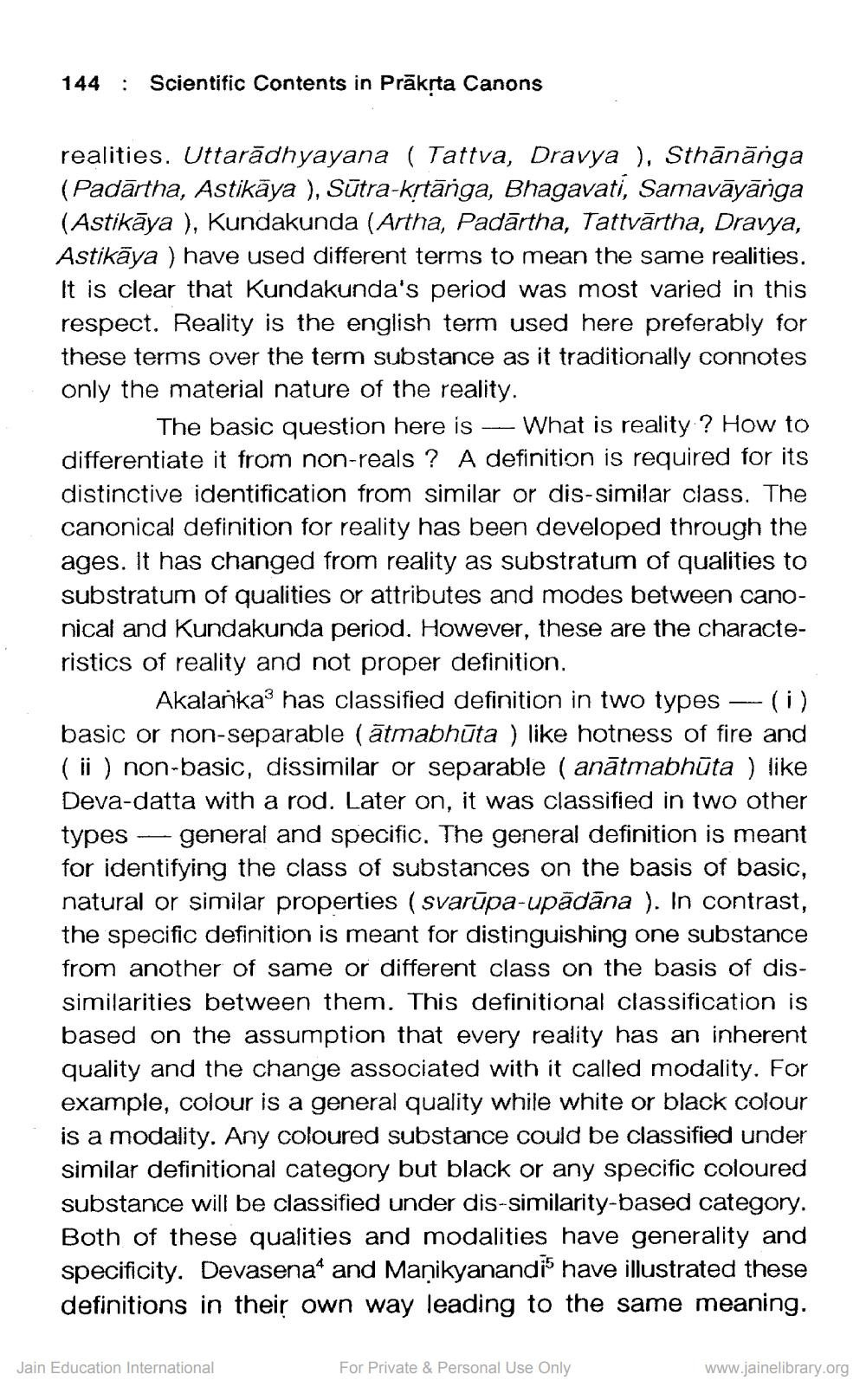________________
144 : Scientific Contents in Prākrta Canons
realities. Uttarādhyayana ( Tattva, Dravya ), Sthānānga (Padārtha, Astikāya ), Sūtra-krtānga, Bhagavati, Samavāyānga (Astikāya ), Kundakunda (Artha, Padārtha, Tattvārtha, Dravya, Astikāya ) have used different terms to mean the same realities. It is clear that Kundakunda's period was most varied in this respect. Reality is the english term used here preferably for these terms over the term substance as it traditionally connotes only the material nature of the reality.
The basic question here is - What is reality? How to differentiate it from non-reals ? A definition is required for its distinctive identification from similar or dis-similar class. The canonical definition for reality has been developed through the ages. It has changed from reality as substratum of qualities to substratum of qualities or attributes and modes between canonical and Kundakunda period. However, these are the characteristics of reality and not proper definition.
Akalanka has classified definition in two types — (i) basic or non-separable (ātmabhūta ) like hotness of fire and ( ii ) non-basic, dissimilar or separable (anātmabhūta ) like Deva-datta with a rod. Later on, it was classified in two other types — general and specific. The general definition is meant for identifying the class of substances on the basis of basic, natural or similar properties ( svarūpa-upādāna ). In contrast, the specific definition is meant for distinguishing one substance from another of same or different class on the basis of dissimilarities between them. This definitional classification is based on the assumption that every reality has an inherent quality and the change associated with it called modality. For example, colour is a general quality while white or black colour is a modality. Any coloured substance could be classified under similar definitional category but black or any specific coloured substance will be classified under dis-similarity-based category. Both of these qualities and modalities have generality and specificity. Devasena' and Manikyanandis have illustrated these definitions in their own way leading to the same meaning.
Jain Education International
For Private & Personal Use Only
www.jainelibrary.org




